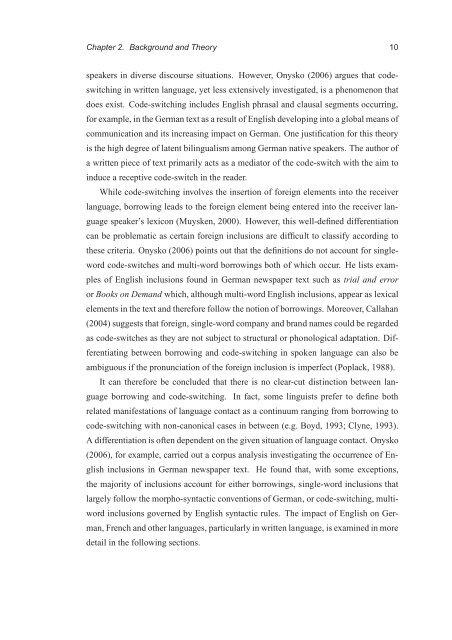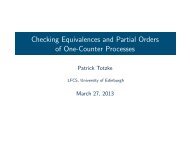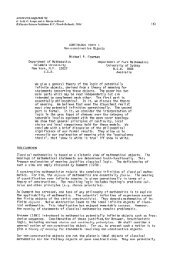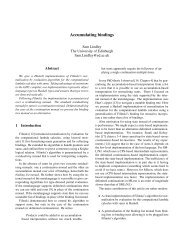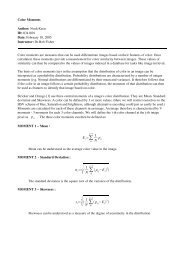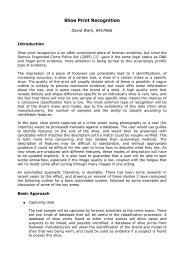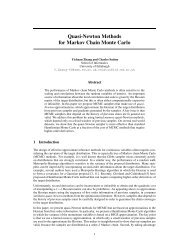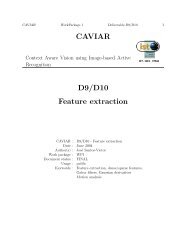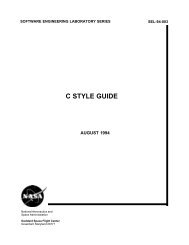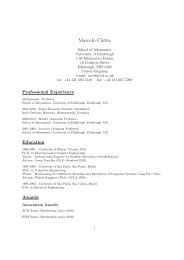PhD thesis - School of Informatics - University of Edinburgh
PhD thesis - School of Informatics - University of Edinburgh
PhD thesis - School of Informatics - University of Edinburgh
Create successful ePaper yourself
Turn your PDF publications into a flip-book with our unique Google optimized e-Paper software.
Chapter 2. Background and Theory 10<br />
speakers in diverse discourse situations. However, Onysko (2006) argues that code-<br />
switching in written language, yet less extensively investigated, is a phenomenon that<br />
does exist. Code-switching includes English phrasal and clausal segments occurring,<br />
for example, in the German text as a result <strong>of</strong> English developing into a global means <strong>of</strong><br />
communication and its increasing impact on German. One justification for this theory<br />
is the high degree <strong>of</strong> latent bilingualism among German native speakers. The author <strong>of</strong><br />
a written piece <strong>of</strong> text primarily acts as a mediator <strong>of</strong> the code-switch with the aim to<br />
induce a receptive code-switch in the reader.<br />
While code-switching involves the insertion <strong>of</strong> foreign elements into the receiver<br />
language, borrowing leads to the foreign element being entered into the receiver lan-<br />
guage speaker’s lexicon (Muysken, 2000). However, this well-defined differentiation<br />
can be problematic as certain foreign inclusions are difficult to classify according to<br />
these criteria. Onysko (2006) points out that the definitions do not account for single-<br />
word code-switches and multi-word borrowings both <strong>of</strong> which occur. He lists exam-<br />
ples <strong>of</strong> English inclusions found in German newspaper text such as trial and error<br />
or Books on Demand which, although multi-word English inclusions, appear as lexical<br />
elements in the text and therefore follow the notion <strong>of</strong> borrowings. Moreover, Callahan<br />
(2004) suggests that foreign, single-word company and brand names could be regarded<br />
as code-switches as they are not subject to structural or phonological adaptation. Dif-<br />
ferentiating between borrowing and code-switching in spoken language can also be<br />
ambiguous if the pronunciation <strong>of</strong> the foreign inclusion is imperfect (Poplack, 1988).<br />
It can therefore be concluded that there is no clear-cut distinction between lan-<br />
guage borrowing and code-switching. In fact, some linguists prefer to define both<br />
related manifestations <strong>of</strong> language contact as a continuum ranging from borrowing to<br />
code-switching with non-canonical cases in between (e.g. Boyd, 1993; Clyne, 1993).<br />
A differentiation is <strong>of</strong>ten dependent on the given situation <strong>of</strong> language contact. Onysko<br />
(2006), for example, carried out a corpus analysis investigating the occurrence <strong>of</strong> En-<br />
glish inclusions in German newspaper text. He found that, with some exceptions,<br />
the majority <strong>of</strong> inclusions account for either borrowings, single-word inclusions that<br />
largely follow the morpho-syntactic conventions <strong>of</strong> German, or code-switching, multi-<br />
word inclusions governed by English syntactic rules. The impact <strong>of</strong> English on Ger-<br />
man, French and other languages, particularly in written language, is examined in more<br />
detail in the following sections.


